

Creating an anonymous survey with Google Forms is really easy. Below, we’ll walk you through a five-step process that only takes a couple of minutes.
1. Log into your Google Forms and create a blank form or choose one of the 20+ pre-built templates on your dashboard.

2. Add questions to your form by first choosing a question type in the dropdown menu and then writing your question. In Google Forms, you can choose between over 10 different question types, including multiple-choice, open-field, and linear scale questions.

3. In the settings tab, choose “Do not collect” next to the “Collect email addresses” field. This allows users to submit responses without you seeing their email address.
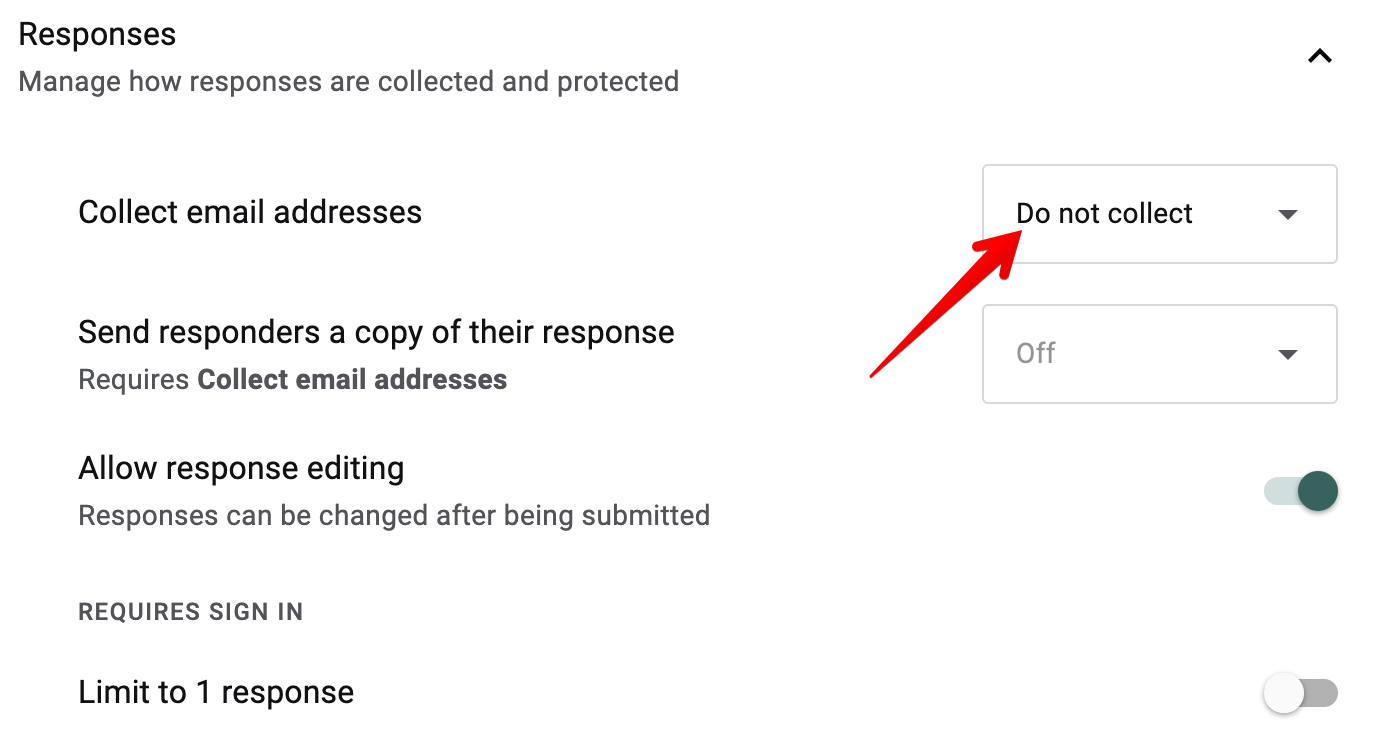
4. You also want to uncheck the “Limit to one” box because selecting this option will require users to sign in with their Google account before filling out your form. By unchecking this box, users won’t have to log in to complete your form.
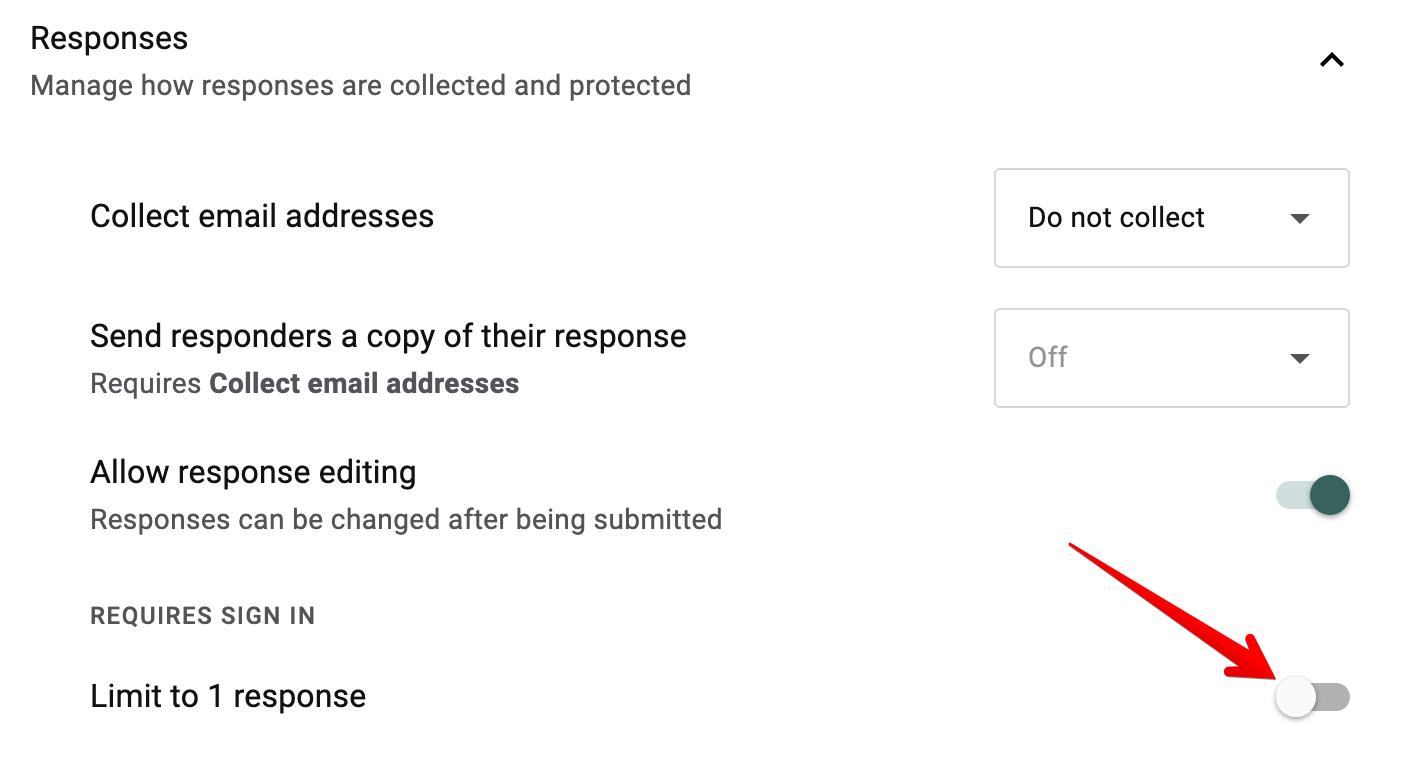
5. Double-check that your form is anonymous by clicking the send button in the upper right-hand corner and emailing it to yourself.

Head to your email inbox, fill out your form and jump back into your Google Forms dashboard. Under the responses section, check to see if you aren’t collecting personal information like email addresses and full names.
That’s it! Your form is now anonymous.
However, there are a few problems we faced when creating anonymous surveys inside Google Forms:
These factors were major reasons behind why we started MightyForms. We wanted to give you access to a form builder that solves everything we believe is wrong with the form building industry.
Below, we’ll show you how MightyForms solves these problems:
Who are we: We are a form builder that allows you to do things that Google Forms and other form builders don’t. For example, our AI can analyze your form data and make suggestions on how to improve your form completion rate. So if you’re looking for a form builder that’s more advanced than Google Forms, consider signing up for a seven-day free trial.
Even though you’re creating anonymous surveys, you still want to understand where users drop off so you can improve your survey’s completion rate.
Google Forms will just give you some barebones statistics like your form views and average time on page.
You’ll get a vague understanding of your survey’s performance, but you won’t know what to improve to increase completion rates.
This is why we built MightyForms with advanced analytics so you can understand exactly where users are dropping off. This makes it easy to find sticking points. For example, if you see people are bouncing before a particular open-field question, it might be a good idea to swap it out with a multiple-choice question.
We also utilize AI to turn your form statistics into usable insights. Instead of just telling you that users are dropping off before question number three, we’ll show you how you can prevent this. Maybe the question is too long, and we’ll suggest shortening it or splitting it up into two questions.
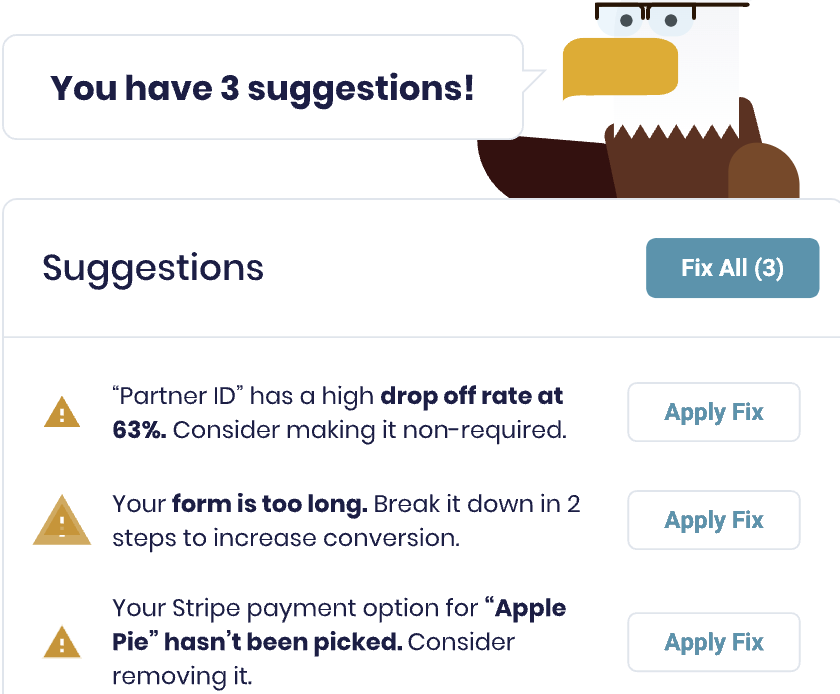
Once you’ve collected feedback, you’ll need to do manual work to put this feedback into action. This could be copying and pasting responses into your CRM or messaging your team.
With MightyForms, you can automate this process so that when someone fills out your form, you automatically send responses to Slack, Trello, Salesforce, Mailchimp, or any tool of your choosing.
For example, let’s say you’re surveying employees on how you can improve their working environment. You could use MightyForms integrations to send responses directly into Google Sheets, where the rest of your HR team can view them.
Note: While it is possible to automate your workflow with Google Forms, you’ll either have to use Apps Script, in which case you need to know how to code, or you’ll need to download an add-on or third-party application like Zapier.
Another problem with Google Forms is that the templates are very limited. Sure, you can customize the font size, background color, and header image, but all the templates look the same. You’ll have the headline block with a couple of question fields and a submit button at the end of your form.
This can make blending your form into your website’s theme challenging.
This is why we added hundreds of pre-built templates into MightyForms, each with a different style. You have templates for customer feedback, employee feedback, and market research forms.
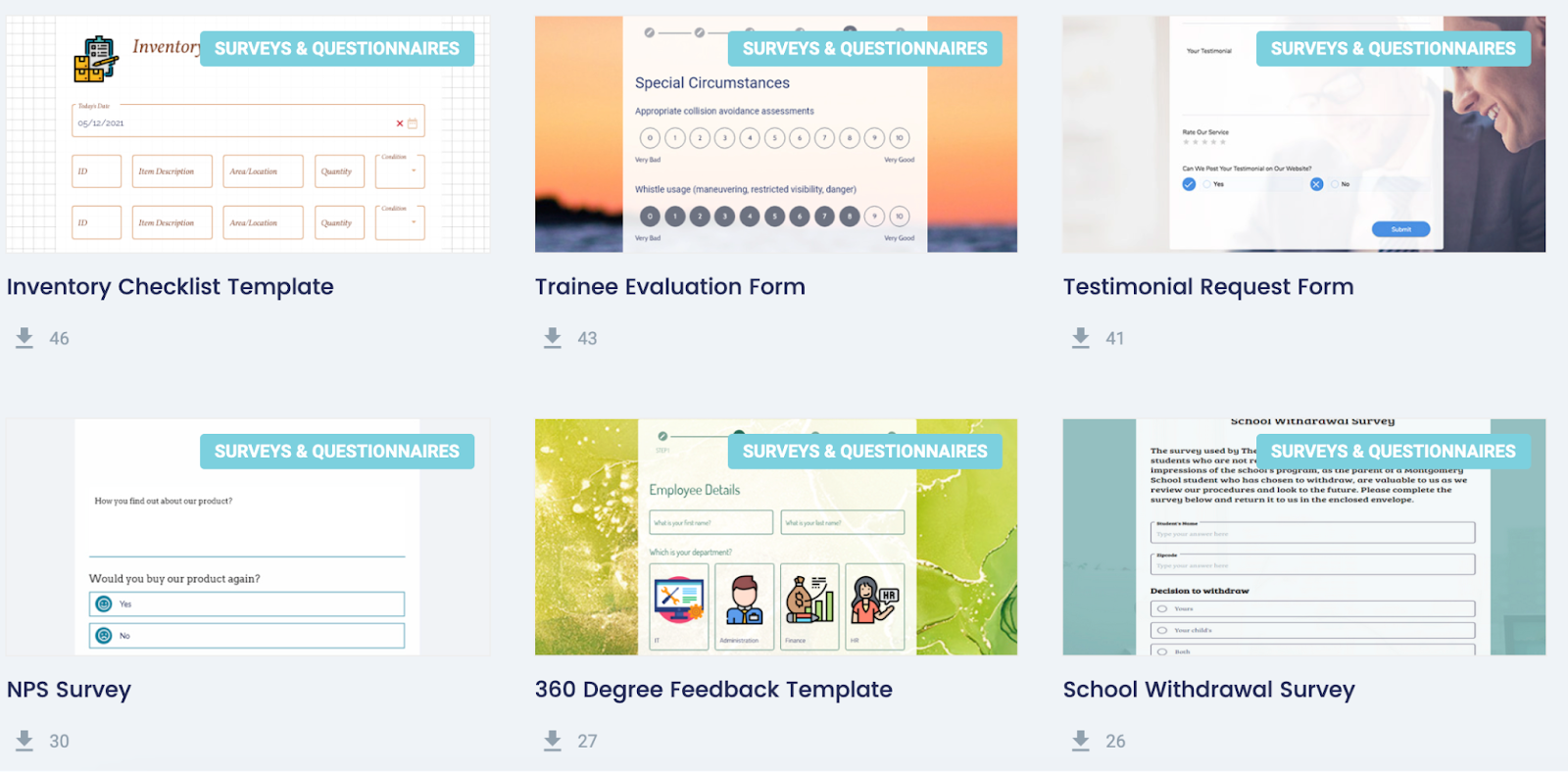
You can customize almost every part of these templates, making it easy to match to your website’s design.
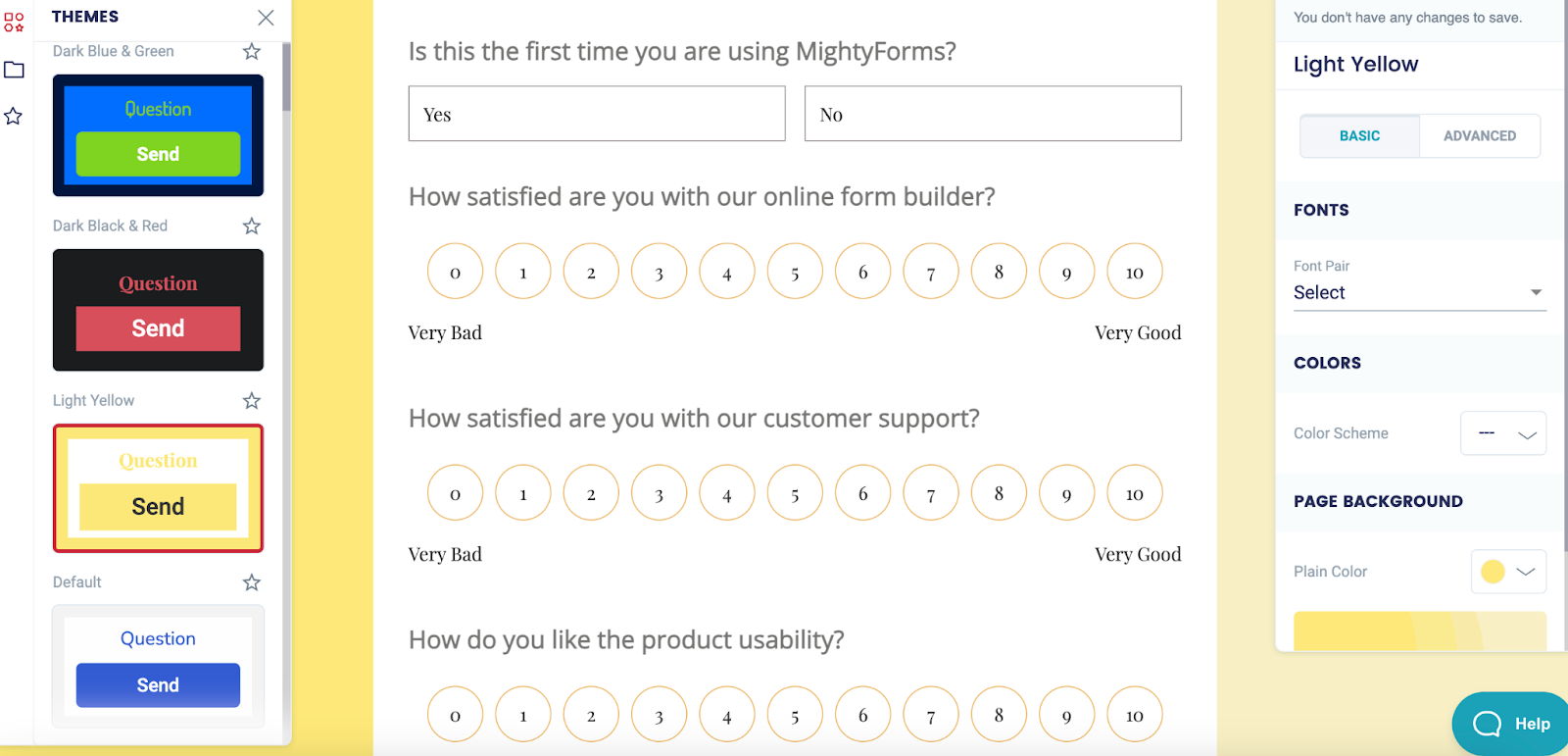
You can even choose a form template that shows one question at a time. This can help reduce survey fatigue, where users view your entire survey, decide it’s too much work, and bounce.
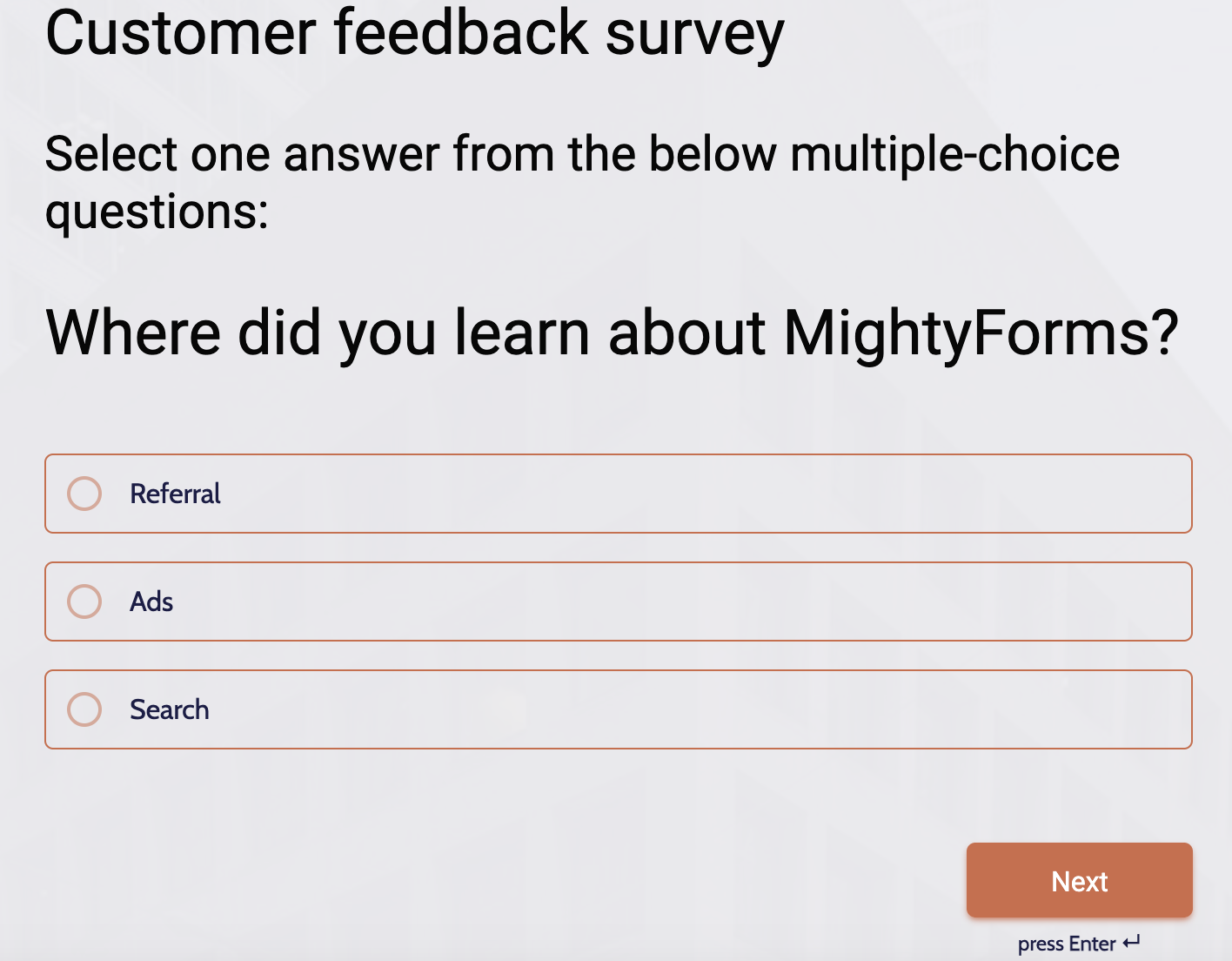
While Google Forms does offer conditional logic features, i.e. questions that change based on a user’s responses, it’s very limited.
For example, Google Forms doesn’t have a visual dashboard that lets you view all your logic rules, making it harder to identify mistakes. You also can’t create questions with and/or logic rules.
When building MightyForms, we fixed all these problems. You can use our visual interface to view the flow of your conditional logic questions and easily find errors. And unlike Google Forms, you aren’t limited to just if/then statements. You can also use and/or statements to create more engaging surveys

If you work in HR and you’re constantly running employee feedback surveys and handling internal paperwork, you might’ve noticed that Google Forms doesn’t allow you or your users to add signatures to forms.
This can be a hassle since you’ll have to use external tools like Adobe or download signature add-ons.
Fortunately, with MightyForms, you can easily add signatures to your forms by dragging and dropping the signature field from the table on the left-hand side of your dashboard onto your form.

From here, respondents can add their signature to your form by either typing it with their keyword or drawing it with their keypad. And if you need to sign off on certain documents, you can add your own signature here.
If you’ve been using Google Forms for a while and are looking to switch to a more advanced form builder, then MightyForms is a good choice.
Alongside the ability to easily create anonymous forms, you get a better understanding of how users interact with your form so you can improve completion rates, and you can connect MightyForms with other tools inside your workflow and automate redundant processes. Sign up for a MightyForms seven-day free trial!